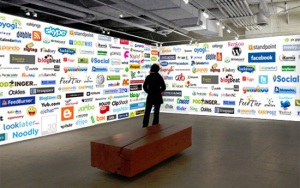No surprise, the standard practice of knowledge transfer in many workplaces—formal training and workshops—account for only 10% to 20% of what people learn at work, says Jay Cross, expert on informal learning and systems thinking. In most cases, money and time are wasted in formalized education and training programs, whereas social learning—a knowledge sharing practice that’s as old as humans—offers far greater benefits, even when there’s little-to-no funding.
People generally learn what they need to know to get the job done just in time, when they need it. In today’s challenging economic times, formal training budgets are small, if they exist at all. A retailer local to my area uses scheduled, designed, formal training on a variety of topics, which are personally delivered by a talking head in management. Results are nowhere near the levels that leaders seek. Programs focused on improving sales and the bottom line yield the best results when delivered by a product manufacturer’s subject matter expert bringing little token gifts (aka, stuff we all get, or SWAG), whereas repeating programs on general topics, such as monthly forced safety meetings delivered by the manager on duty to bored employees, yield very low rates of return. Disengaged workers turn off and tune out. The “what’s in it for me” factor is missing. If this retailer were to offer training via social media tools, I’d bet the outcomes would be closer aligned to manager targets.
Sun Microsystems has figured out how to implement effective learning via social media by instituting an open learning exchange program called Sun Learning eXchange (SLX). Its goals are simple—provide an alternative to formalized learning, take advantage of the opportunity to use community expertise, and harvest knowledge within the community. In 2009, SLX contained more than 5,000 pieces of informal learning, the majority of which are objects aimed at increasing productivity, aiding sales and technical support and providing internal marketing. According to Sun, any employee can contribute content, knowledge and expertise to SLX. The SLX content—downloadable via iTunes— is structured in a variety of media, including PDF documents, podcasts and videos. Senior executives are using SLX to communicate direction and strategy with the workforce via video shorts and made available for the program called, Five-minute Fridays. Seems the sky’s the limit in terms of learning and sharing knowledge via SLX. Sun also uses SLX to attract future workers by making Web-based content available to high school and college students.
Social media internally for training and knowledge sharing is a far less expensive and more effective learning tool, over traditional, in-person and onsite formalized training programs. Formalized coaching means greater impact by reinforcing and supporting newly learned knowledge and skills. Combined, social training and formal coaching offer great results. People can reflect on newfound knowledge and crystallize learning in the workplace, and that helps put new skills into practice. Annual employee performance reviews and worker perception of the company increase annually.
Informal learning isn’t perfect, so companies should not eliminate their professional trainers; there’s much improvement work to be done. Companies that innovate, that offer better training and learning opportunities designed to work with individual learning needs and styles, and that empower their people to participate in learning programs stand the best chances of surviving economic downturns.
Read more in Knowledge Delivered in Any Other Form is … Perhaps Sweeter






You must be logged in to post a comment.